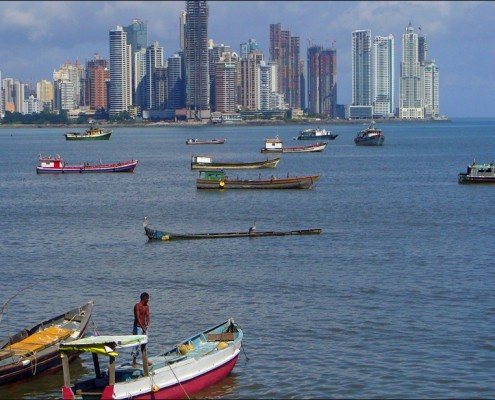
Water News: What’s Ahead in 2012
1 Comment
/
News headlines are often dominated by the big, unexpected events…
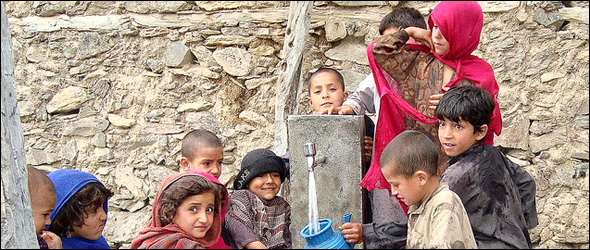
Plumbing WikiLeaks: Water’s Role in U.S. Foreign Aid
Diplomatic cables show that the U.S. State Department aims to…
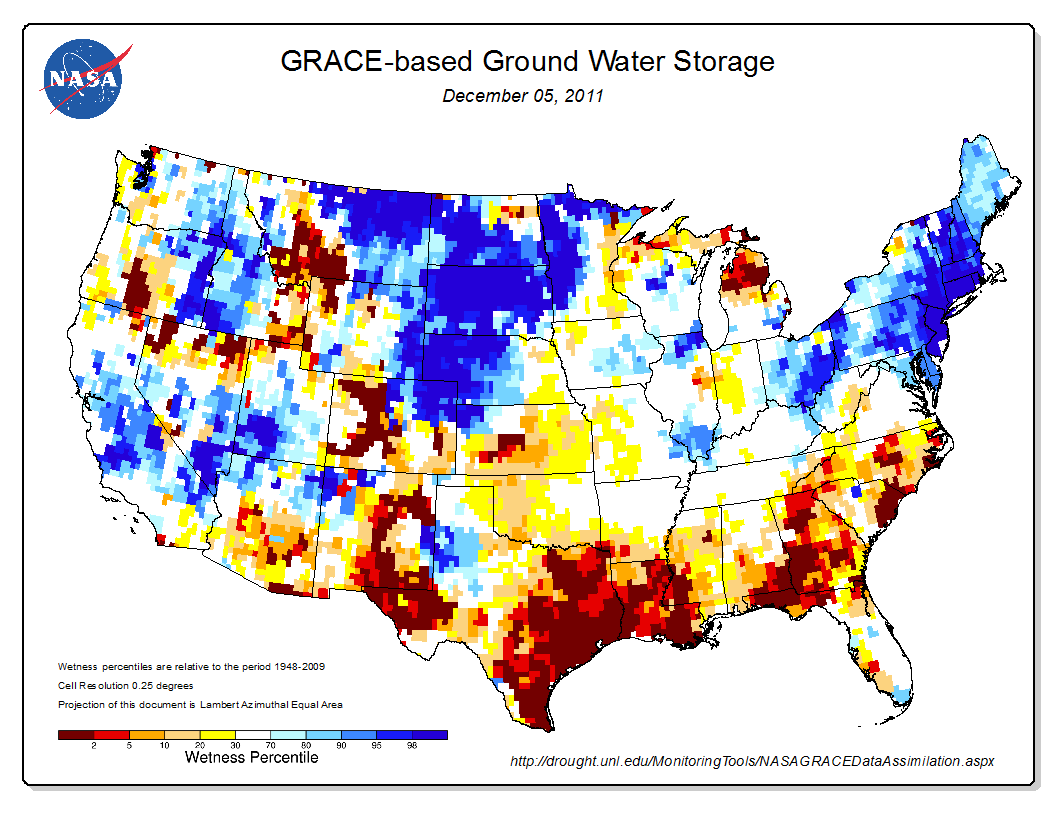
Map: NASA Shows Big Dip in U.S. Groundwater Regionally, Especially Near Texas Drought
Using calculations based on satellite observations and long-term…

Price Volatility: Food and Water Insecurities Require Deep Pockets
Adding pressure to already strained budgets, the price of food is expected to remain high and quite volatile on the heels of this year's extreme floods and droughts. Though price increases are occurring globally, they are hitting hardest in the developing world.
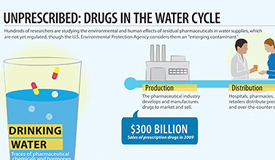
Infographic: Unprescribed — Drugs in the Water Cycle
In 2009, 3.9 billion prescriptions were dispensed in the United States, and an estimated 10 to 40 percent of medicines are not used. With 78 million baby boomers reaching the age when prescription drug use will increase, how will this affect environmental and drinking water?
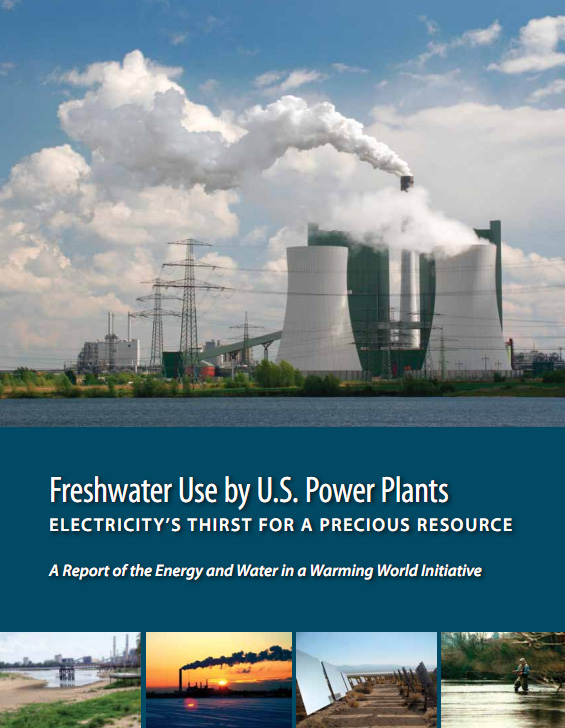
Report: Thirsty Power Plants Increase U.S. Water Stress
Water-energy choke points in Texas serve as examples of a larger issue for the United States, as pointed out in a new report for the Energy and Water in a Warming World Initiative, spearheaded by the Union of Concerned Scientists.

Racing an Arizona Senator’s Retirement, Dry Navajo Nation Draws Closer to Securing More Water
The largest reservation in the U.S. has one of the nation's highest poverty rates — more than 40 percent — and very little water infrastructure. Many residents pay nearly 50 times the municipal cost for water, which instead is delivered from a tank in the back of a truck, often resulting in water-borne intestinal illnesses.
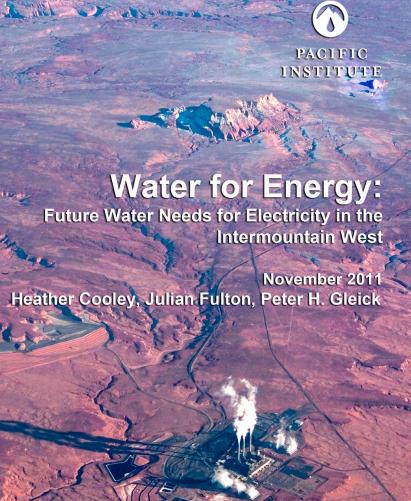
Pacific Institute Report: Setbacks and Solutions of Water-Energy Clash in U.S. Intermountain West
At the forefront of a national trend, this region is already suffering from intense conflicts that willy only worsen with climate change and population growth. However, the report also highlights several ways to dramatically reduce the water requirements for electricity generation.
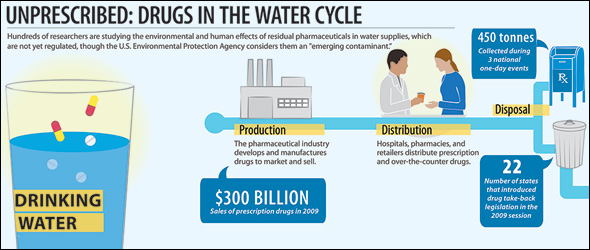
Unprescribed: Legislation to Keep Drugs Out of Water Thwarted by U.S. Pharmaceutical Lobbying
An estimated 10 to 40 percent of prescription and over-the-counter medicines are not used, but how to properly dispose of these drugs depends on who you ask. Since there is no continuous national program, states — and even some cites — are instituting their own regulations, but not without complaints from the pharmaceutical industry.
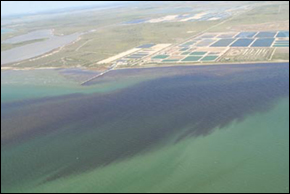
Red Tide Downstream of Texas Drought: Marine Ecosystems Suffer Lack of Fresh Water
High temperatures and salinity concentrations along the Texas Gulf Coast are behind a toxic red tide, fish kills, and an influx of oyster parasites. Additionally, several saltwater species have been found upstream, surviving in a typically freshwater environment and signaling a large change in these delta ecosystems.
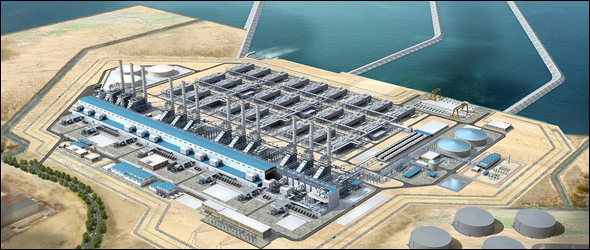
Plumbing WikiLeaks: Saudi Arabia Fears Iranian Nuclear Meltdown and Potential Terrorism to Desalination
Classified cables show that Saudi and U.S. officials believe water supplies along the Persian Gulf are at high-risk for terrorist attacks and possible contamination from nearby nuclear plants. This is the first of a new series that will analyze the water-related U.S. embassy cables published by WikiLeaks.
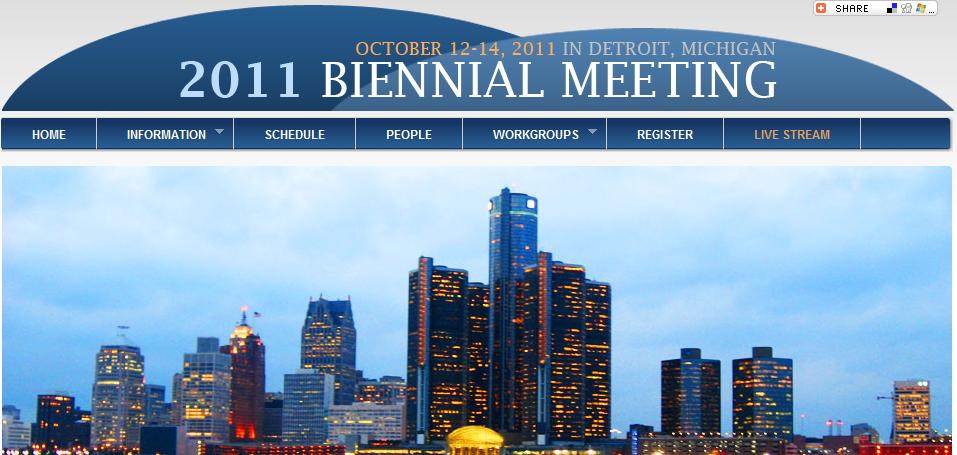
Report & Conference: Assessing Great Lakes Health and Future — Al Gore Delivers Keynote
In Detroit last week, three organizations involved in Great Lakes management held concurrent and joint meetings to discuss the future of one of the world’s largest sources of fresh surface water. Former Vice President Al Gore delivered the keynote address, linking climate change to water issues.


